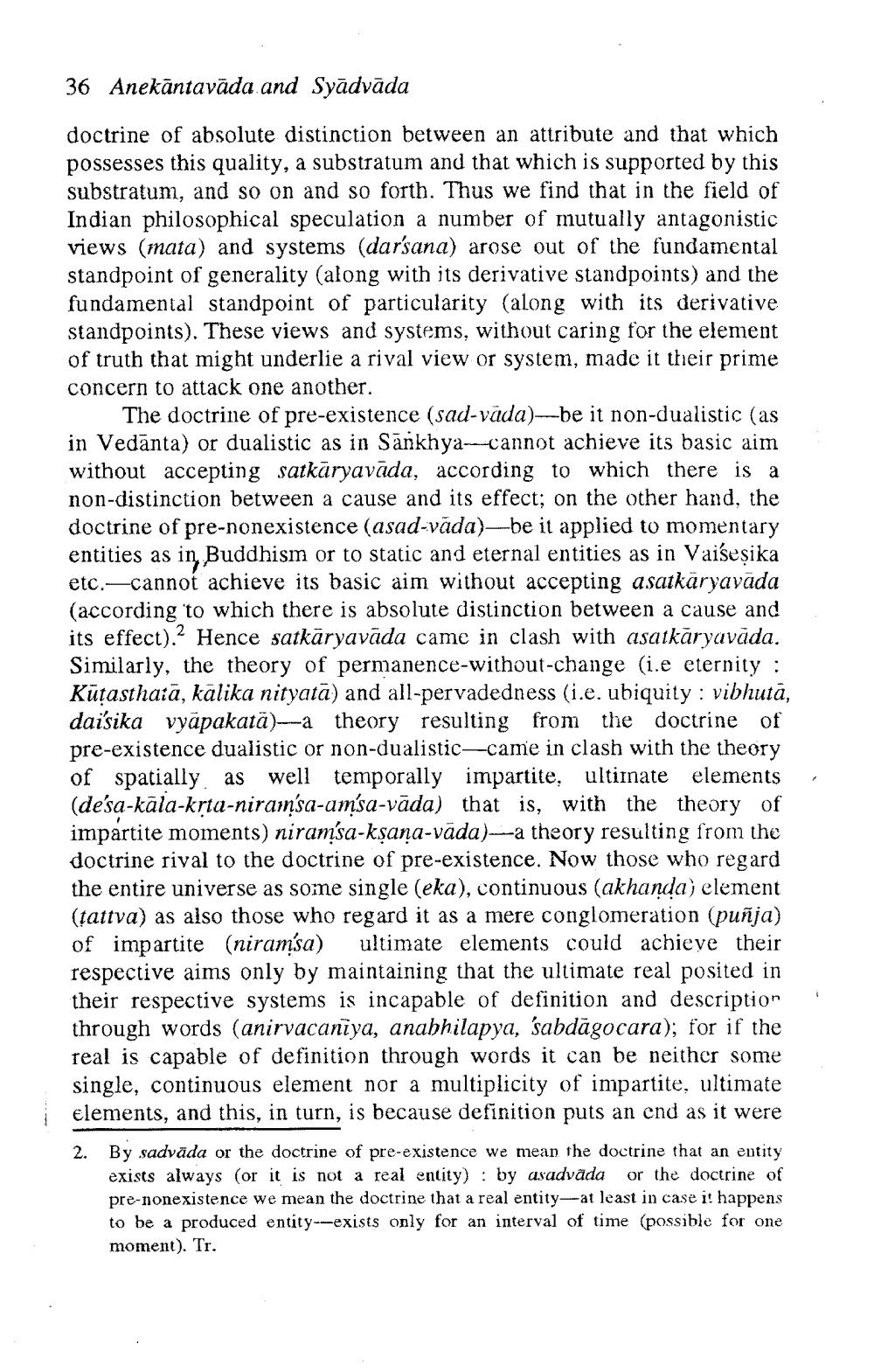________________
36 Anekāntavāda and Syādvāda
doctrine of absolute distinction between an attribute and that which possesses this quality, a substratum and that which is supported by this substratum, and so on and so forth. Thus we find that in the field of Indian philosophical speculation a number of mutually antagonistic views (mata) and systems (darsana) arose out of the fundamental standpoint of generality (along with its derivative standpoints) and the fundamental standpoint of particularity (along with its derivative standpoints). These views and systems, without caring for the element of truth that might underlie a rival view or system, made it their prime concern to attack one another.
The doctrine of pre-existence (sad-vada)-be it non-dualistic (as in Vedānta) or dualistic as in Sankhya--cannot achieve its basic aim without accepting satkāryavāda, according to which there is a non-distinction between a cause and its effect; on the other hand, the doctrine of pre-nonexistence (asad-vāda)—be it applied to momentary entities as in Buddhism or to static and eternal entities as in Vaiseșika etc.—cannot achieve its basic aim without accepting asatkäryavada (according to which there is absolute distinction between a cause and its effect). Hence satkāryavāda came in clash with asatkāryavāda. Similarly, the theory of permanence-without-change (i.e eternity : Kütasthaiā, kālika nityatā) and all-pervadedness (i.e. ubiquity: vibhutā, daisika vyāpakatā)--a theory resulting from the doctrine of pre-existence dualistic or non-dualistic-came in clash with the theory of spatially, as well temporally impartite, ultiinate elements (de'sa-kala-krta-niramsa-amsa-vāda) that is, with the theory of impartite moments) niramsa-kşana-vāda)--a theory resulting from the doctrine rival to the doctrine of pre-existence. Now those who regard the entire universe as some single (eka), continuous (akhanda) element (tattva) as also those who regard it as a mere conglomeration (puñja) of impartite (niramsa) ultimate elements could achieve their respective aims only by maintaining that the ultimate real posited in their respective systems is incapable of definition and description through words (anirvacaniya, anabhilapya, sabdāgocara); for if the real is capable of definition through words it can be neither some single, continuous element nor a multiplicity of impartite, ultimate elements, and this, in turn, is because definition puts an end as it were 2. By sadvāda or the doctrine of pre-existence we mean the doctrine that an entity
exists always (or it is not a real entity) : by asadvada or the doctrine of pre-nonexistence we mean the doctrine that a real entity-at least in case it happens to be a produced entity--exists only for an interval of time (possible for one moment). Tr.




